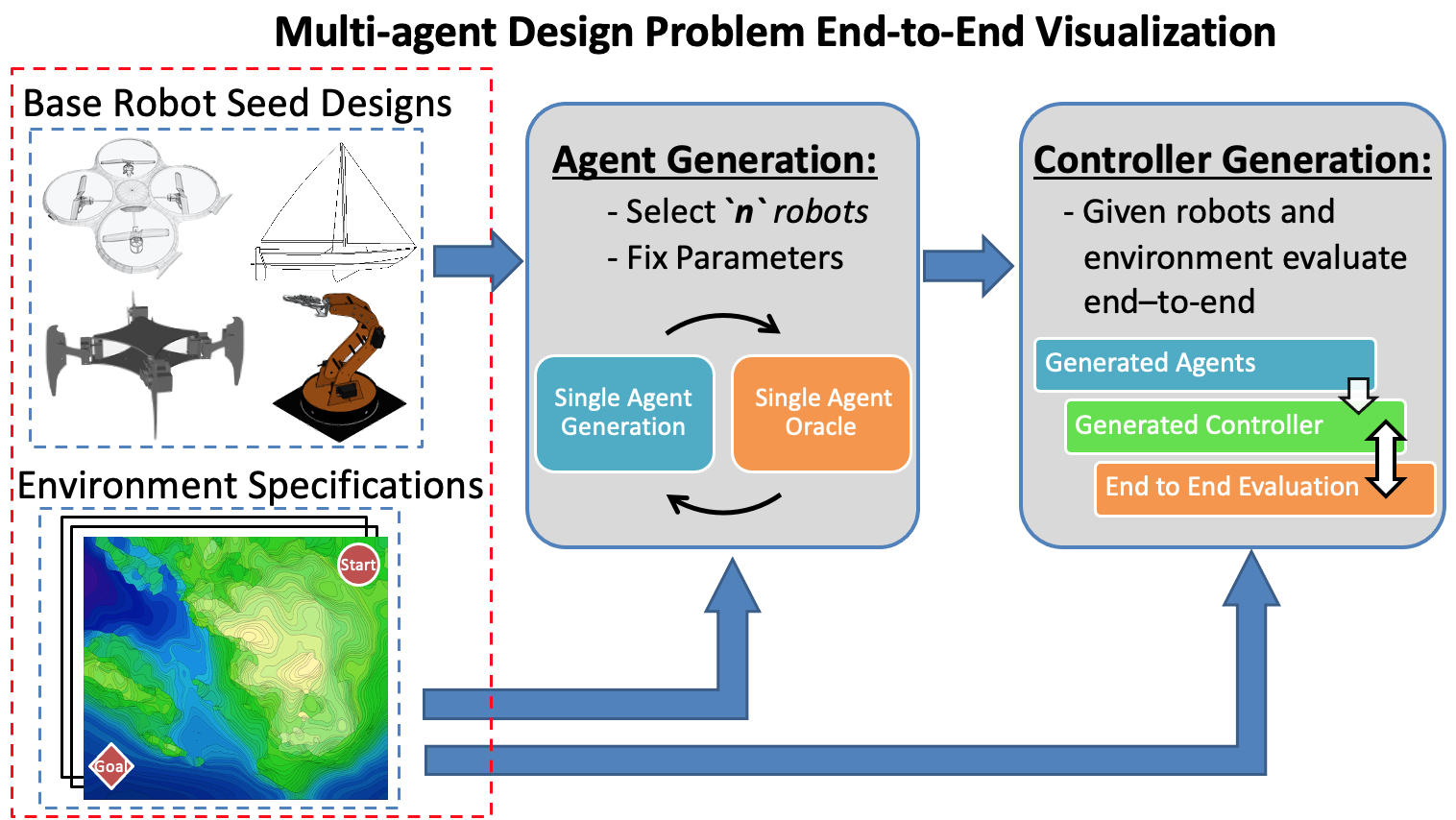"LOGiCS is a project funded by the DARPA program on Symbiotic Design of Cyber-Physical Systems. The aim of the project is to develop design tools and techniques that augment human designers with an AI co-designer towards achieving significant improvements in design productivity as well as design 'surprises'." (excerpt from https://logics.design/)
In order to validate our single agent design approaches we are building on the RoCo’s manufacturable by design problem. This challenge has 4 major steps:
- Selection of proper parameters for some seed design.
- artifact generation for these given parameters
- a WeBots simulation as an expert oracle
- RoCo also outputs manufacturing instructions so we can evaluate our designs that performed highly in simulation in the real world.
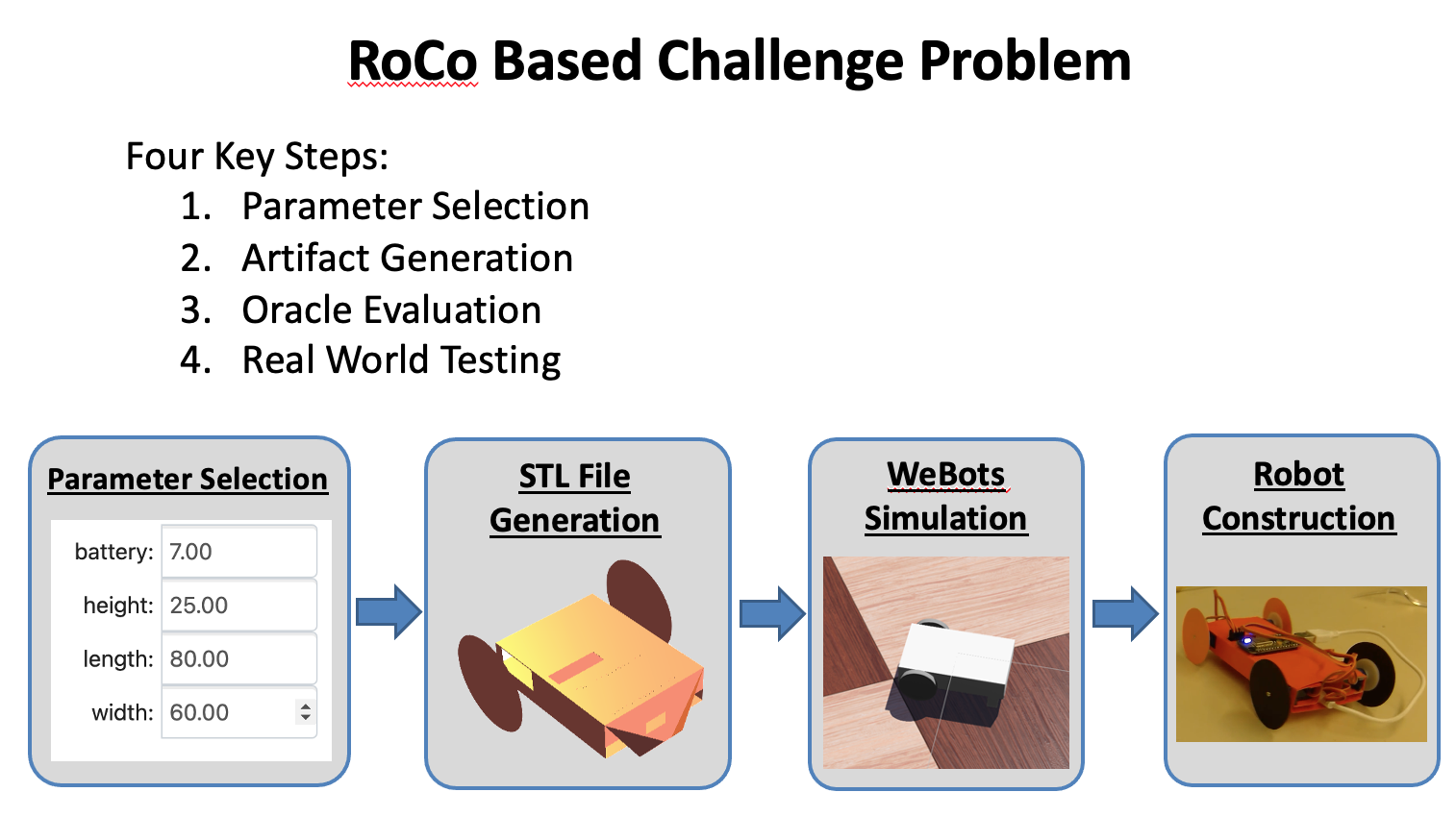
In addition to the single agent design problem we are construction a multi-agent challenge problem. The goal of the multi-agent design toy problem is to produce an internal challenge problem that allows for us to quickly be able to evaluate our approaches. To this end we have been thinking about the multi-agent design problem for multiple terrains. Initially we are thinking that the terrain can be represented a discretized grid with each point being a variable terrain type. Furthermore there will be a limited set of robots which will be simulated as points in the grid with known dynamics, for now these dyanmics will be limited to battery life, traversable terrain, and max speed/acceleration. This intentionally designed to be able to easily extended to continuous space and built on the RoCo single agent problem.
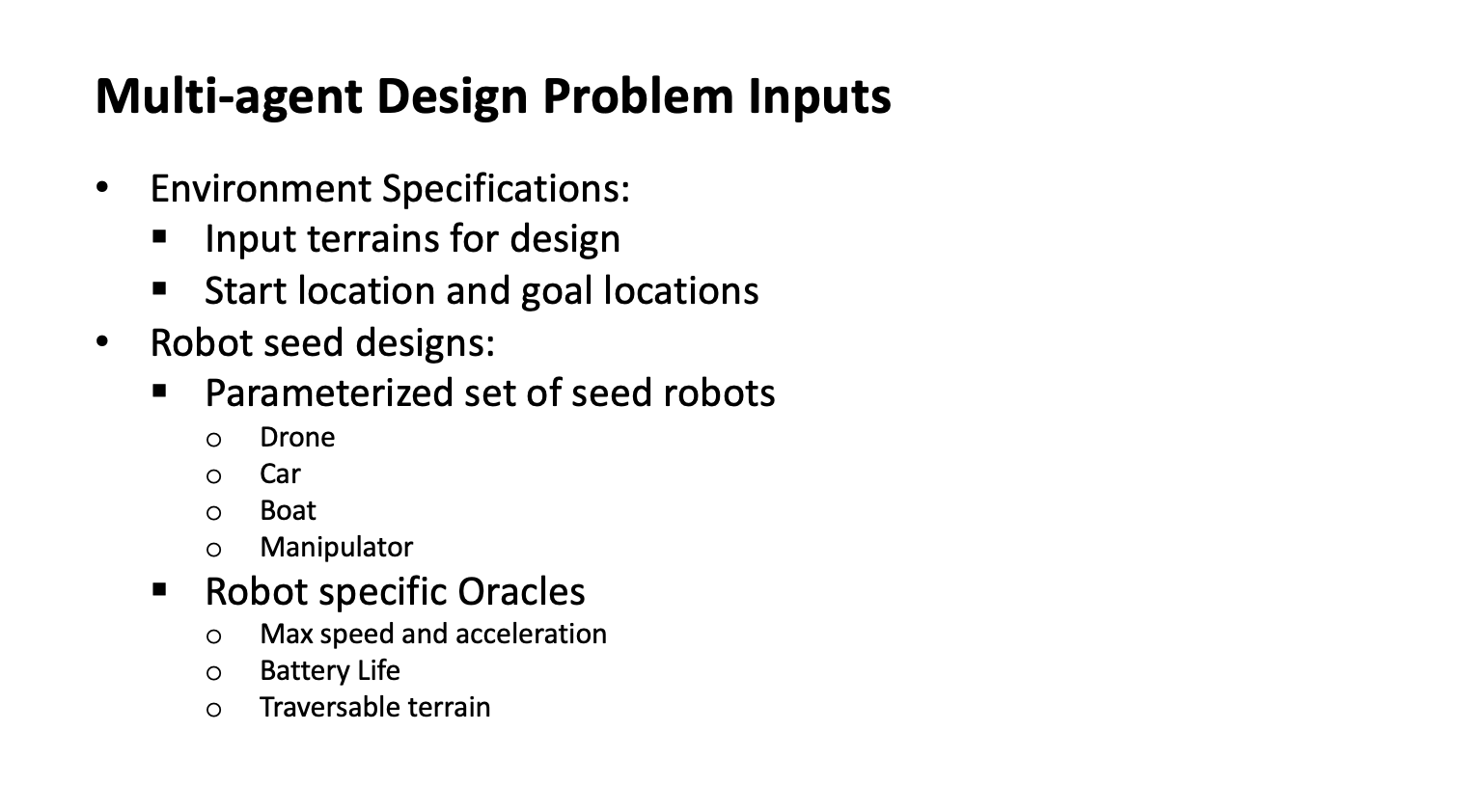
Again the main goal is to have use small challenge problem for quickly evaluating performance of new methods.
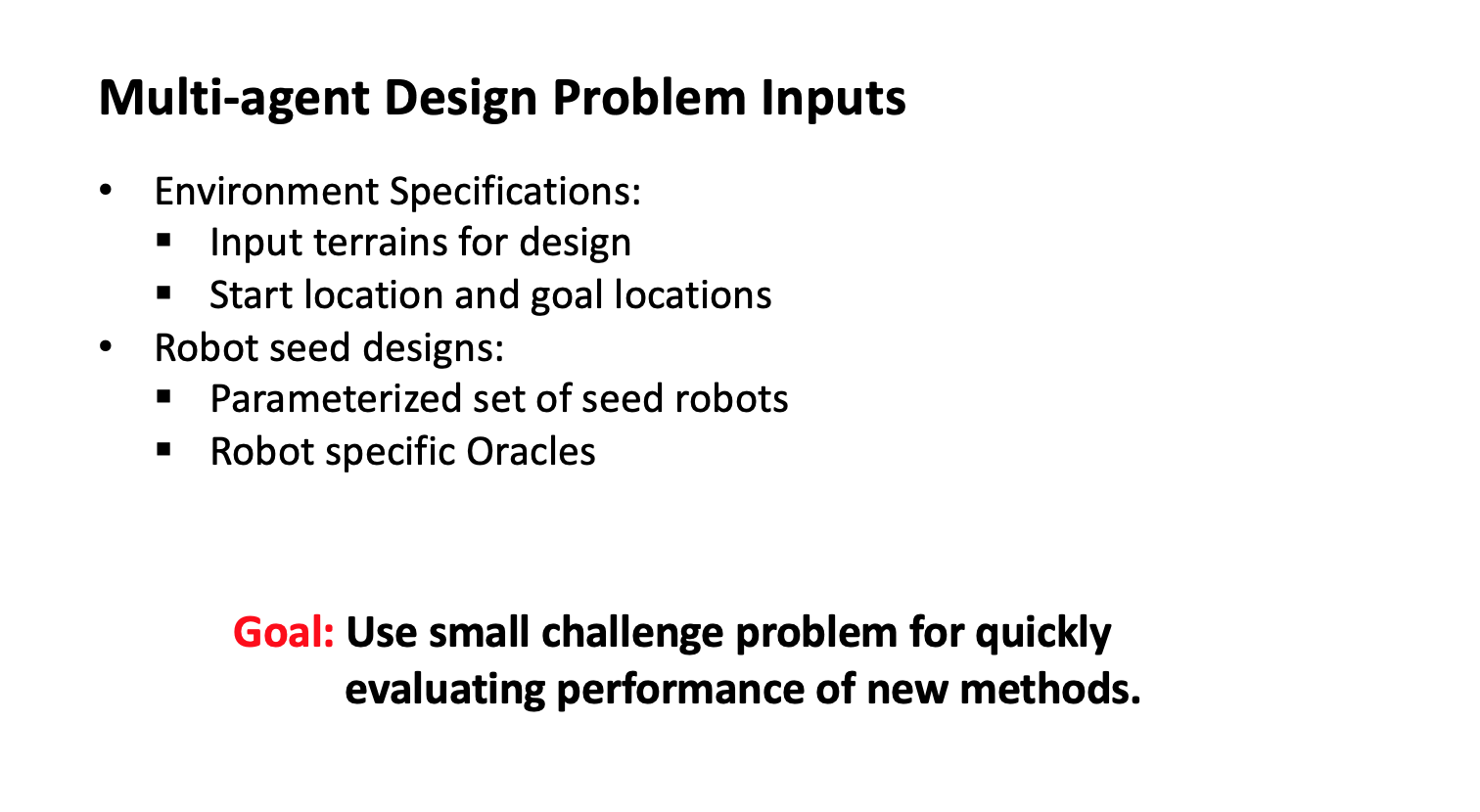
Here is a visualization of the inputs for the design problem. As inputs we receive a set of robot seed designs and a terrain specification with a set of desired goals.
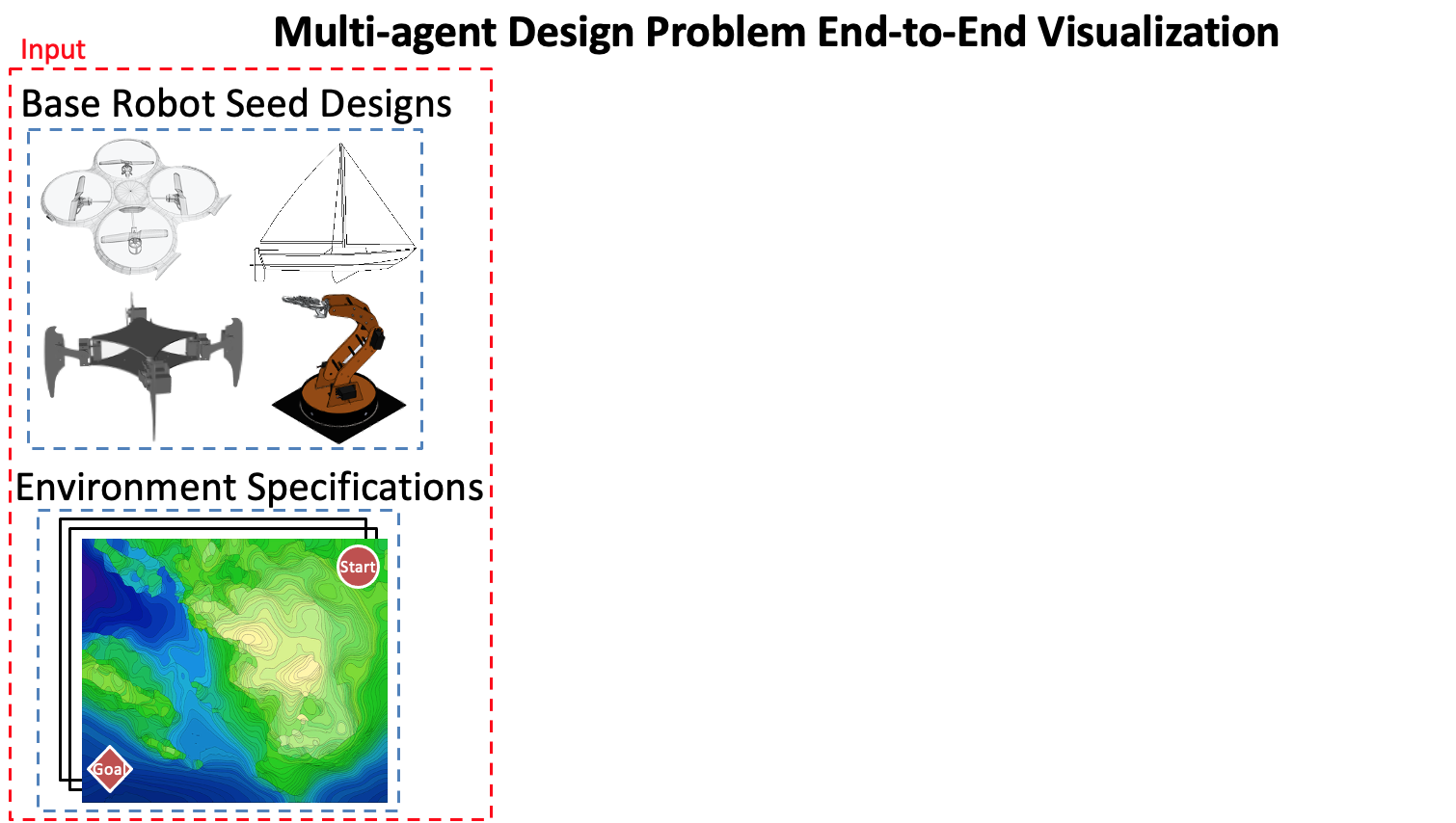
These inputs will be consumed by agent generator which selects a set of n robots and fix the parameters. Each agent will have its own set of oracles for evaluation.
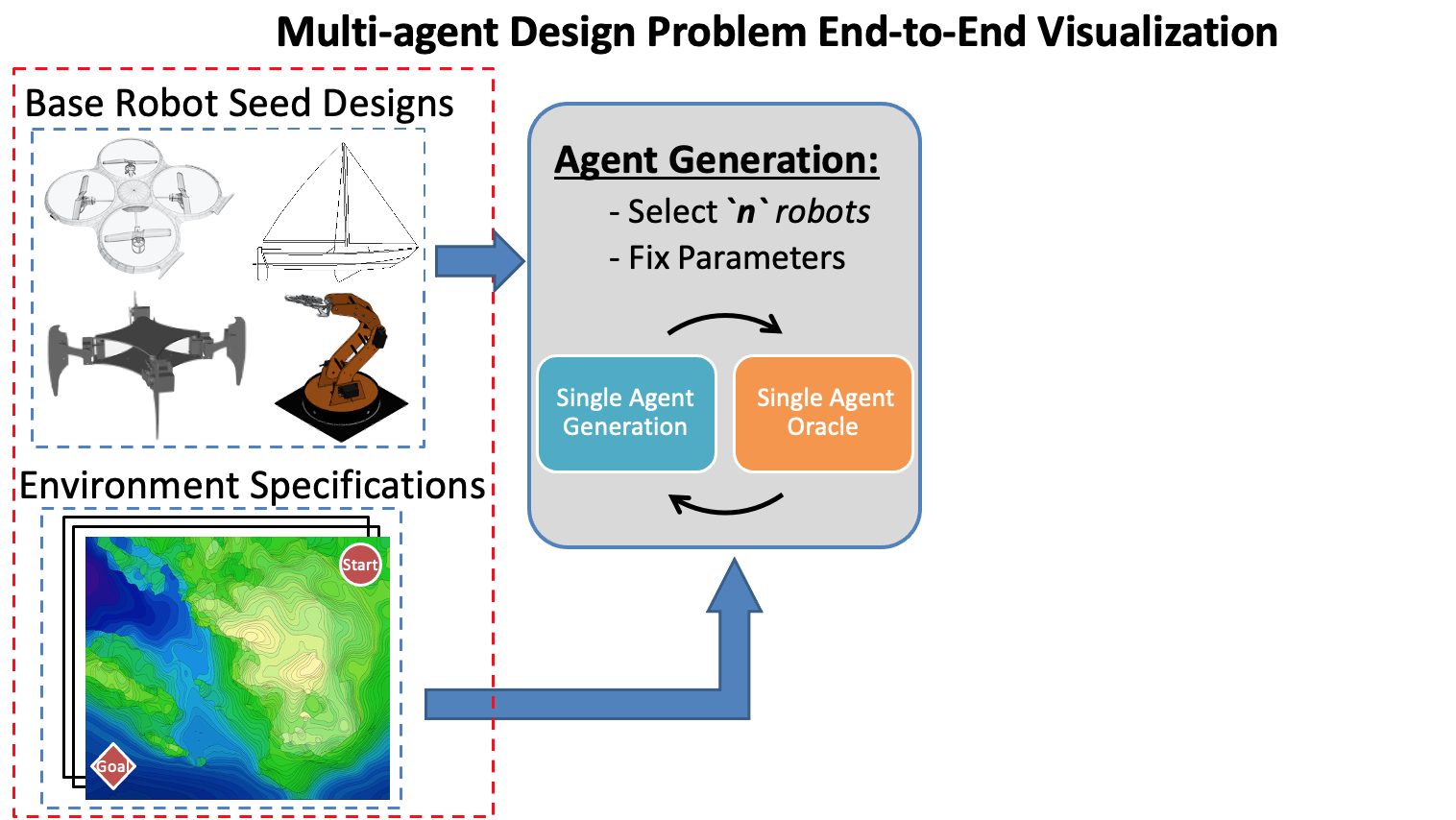
The now fixed robots will then be passed into a control generator and evaluated in an end-to-end oracle.
